Home Entertainment 2005: Day 1
Day 1 of the show, reserved for the press and largely taken up by wall-to-wall press conferences, had no shortage of video and audio news. Samsung started things off with a big announcement about their partnership with Microsoft in promotion of the newest Xbox video-gaming console, which will include HD capability. Over 25,000 demo units will be installed in retailers all over the world, and each of them will be demonstrated in conjunction with a new 23-inch Samsung LCD flat-panel display (said to be gaming-worthy, with its 12-millisecond pixel-switching speed).
Another aspect of the Samsung-Microsoft alliance is the Hope For Education essay contest. Now in its second year, this competition invites students, teachers, and parents to submit a 100-word essay on how technology in the classroom will benefit students in the future. This year's grand prize is $200,000, with 10 first-place prizes of $20,000. The contest runs from April 28 to July 1.
Samsung did not discuss their new televisions at the press conference, but two of their upcoming 1080p sets were on display: one 67-inch model (the tabletop HL-R6768W), and two 56-inch designs (the tabletop HL-R5678W and the pedestal-mount HL-R5688W). All three sets include Samsung's new Dynamic Black Level feature, which appears to use one of the new dynamic or auto irises that are being incorporated into many new digital displays.
All the new 1080p DLP displays from Samsung and other manufacturers use a new Texas Instruments chip that arrives at its 1080p in a way that some video enthusiasts view with skepticism. If we have the story right—and TI has been reluctant to provide details—the chip has only 960 mirrors in each horizontal row, and each mirror alternately addresses two adjacent pixels. (When I asked a TI rep at last January's CES if the new 1080p chip had a full 1920x1080 pixels on the chip, his response was that there were 1920x1080 pixels on the screen.) We'll have more to say about this technique in a future article. But for now, the sets we've seen in manufacturers' demos have shown promise; we'll have to wait and see the results with actual review samples.
Polk Audio announced three new in-wall subwoofers, ranging in price from $1260 to $1500. But that was not the big news from Polk. Their new I-Sonic Entertainment System is the first serious product we've seen to incorporate iBiquity's HD Radio technology. If you haven't been following the HD Radio story, it promises audio quality far better than AM and FM can deliver. It's a terrestrial digital-broadcast system operating at a maximum data rate of 150 kilobits per second. While claims of "up to CD quality" may be just a teensy bit overstated, it just might make those of us who gave up on radio years ago as a serious music source take another listen. Currently, there are 10 stations broadcasting HD Radio in LA, 14 in Chicago, and others scattered around the country. New York remains a bit problematic because of the limited antenna space after the loss of the World Trade Center on 9/11.
The I-Sonic resembles one of those overgrown stereo clock radios that are sometimes claimed to eliminate a whole room full of components. Polk's Paul DiComo knows better—and knows that his audience knows better—but it's still an exciting product for that spare bedroom, dorm room, office, or a peace offering for the mother-in-law. In addition to HD Radio, it offers standard AM and FM, and it's XM satellite-radio-ready (with the addition of an XM Connect & Play antenna). It even has a DVD player. Polk's onboard sound system features a 4-speaker array with waveguides to improve the sound. If you want more (you might, the mother-in-law probably won't) there are stereo analog outputs to feed a beefier sound system. Look for it in September at $599 (and an extra $49 for the XM antenna option, plus XM fees, of course; there are no fees associated with HD Radio).
Outlaw Audio's big announcement was the new Model 990 7.1-channel audio/video controller/processor. Its major plot points include balanced audio outputs, DVI switching (2-in, 1-out), high bandwidth (100MHz) component-video switching, transcoding between composite, S-video, and component sources (including onscreen display), automatic speaker setup and calibration with an included microphone, and upgradeable firmware. In addition, there's lip-sync delay, subwoofer offset for 2-channel sources, and 24-bit/192kHz D/A conversion on all channels. PCM sources are also upconverted to 24/192, and all major surround formats are supported. The price: $1099! Units are expected to ship shortly.
Outlaw also announced shipment of its smaller LFM-2 subwoofer, with an 8-inch driver and a rated -2dB point of 28Hz ($299, around June).
DVD-server maker Kaleidescape may still be fighting a lawsuit (an ordeal that began on December 7, 2004—interesting date), but such things have a way of dragging on for years. In the meantime, the company is still very much doing business. In fact, they showed new versions of their hard-drive DVD servers at the show. The System 3000 can serve independent, simultaneous video streams to as many as five zones, while the System 3500 can stream up to 25 or more—for that palace or yacht, no doubt. There's a new 400GB disc cartridge, a new server (the 2500), and new software version (2.4).
The software upgrade adds important new features. Most interesting are Scripts, which let you string together a sequence of your favorite scenes from different movies, and Saturday Night at the Movies, which sets up a sequence for a complete movie night—for example, an introduction for the audience walk-in, cartoon, short subject, and main feature. The only snag is the price. The base configuration of the System 3000 goes for $22,500; the System 3500 for around $30,000.
For those who want to keep tabs on the status of that lawsuit, Kaleidescape posts important developments on their Web site.
Scott Wilkinson provides a look around the show.
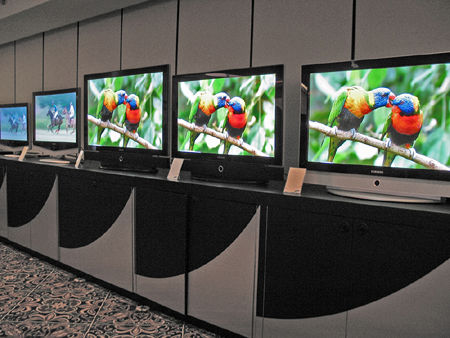
Samsung had three plasmas (right) and two LCD flat panels on display.
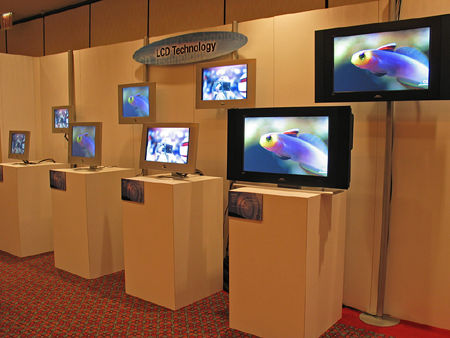
TCL/Thomson Electronics (TTE) now manufactures LCD flat panels and other displays under the TCL, Thomson, and RCA brand names.
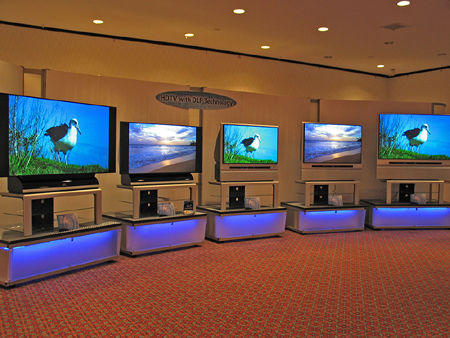
TTE's DLP RPTVs are in their fourth generation and range from 44 to 61 inches diagonally.
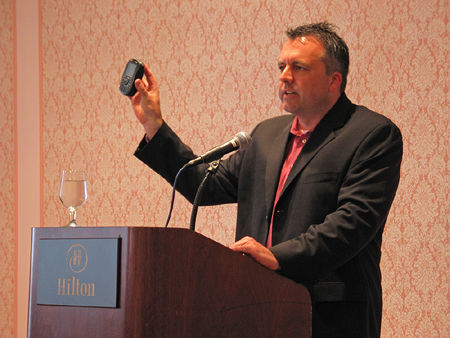
Brian Shea, V.P. of marketing of aftermarket distribution for XM Satellite Radio, brought journalists up to speed on the state of XM during his keynote speech at the press luncheon.
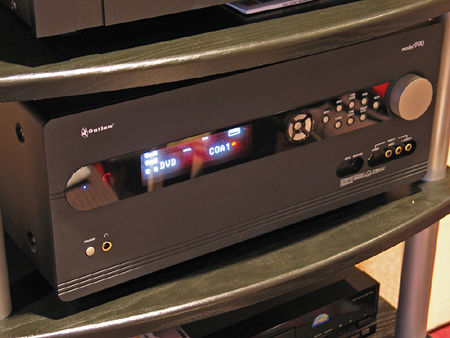
Outlaw introduced the 990 pre-pro, which is quite tall to accommodate DVI connectors among other things.
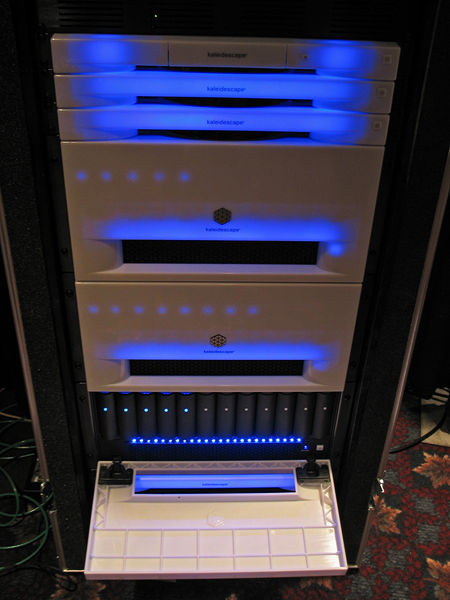
The Kaleidescape hard-disk-based DVD server is one of the coolest-looking products on the planet.
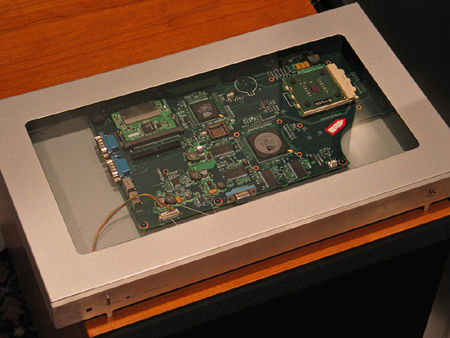
Acoustic Research introduced the Digital Media Bridge ($350), which lets you access video, audio, and photo content on your PC.

The Rave Awards add a touch of elegance to the New York vista below.
























































